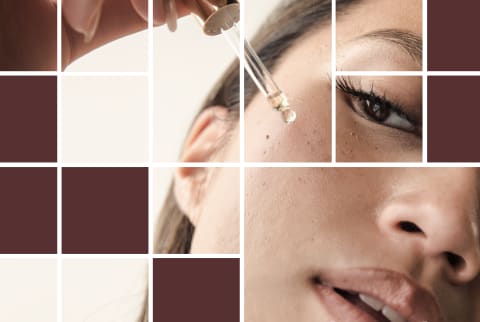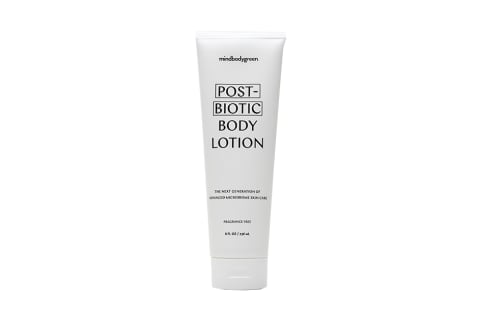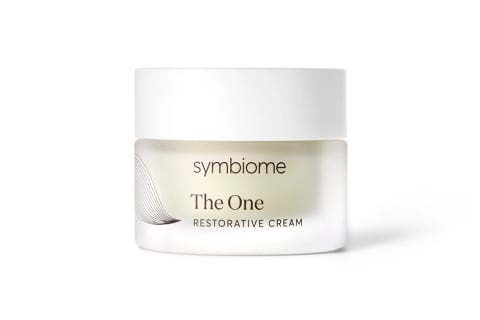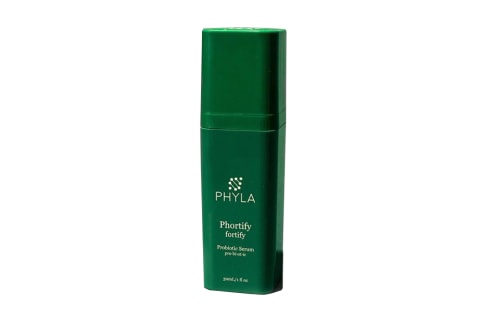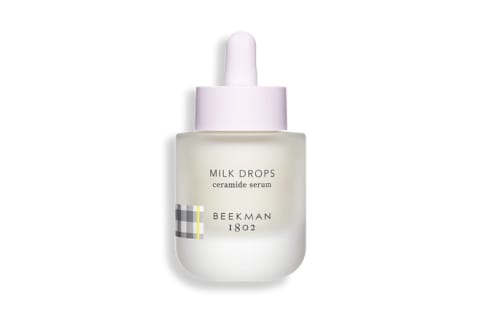And we’ve only just begun to uncover the complexity of the skin microbiome. Think about how little we know about space in relation to the vastness of the universe—that’s basically our understanding of the galaxy of organisms that live on the skin. “We need to grow a sense of wonder and humility about what we’ve discovered. We have emerged and evolved within this fully microbial world that was once fully invisible to us,” says biotech and microbiome expert and researcher Larry Weiss, M.D. “It was invisible before, but going forward we won’t be able to ignore it.” Indeed, some very exciting discoveries have emerged recently. Led by top research institutions and leading biotech companies, the skin microbiome has become the most innovative space in health. Yes, research is still in its infancy—but the body of work is steadily growing. Exploring galaxies takes time after all. Here, some of the more impressive findings. “What we are studying is something that none of us have—a biofilm. The hardest thing to find is something you didn’t know you lost,” says Weiss, who founded Symbiome. Thousands and thousands of microorganisms that used to make up our skin’s biofilm (which is sort of like the top protective layer of our microbiome) have been depleted from our skin. We’re estimated to have lost some 80% of our microbial diversity due to this. We no longer live inside this biofilm and are suffering the consequences—primarily inflammation. “Yes, we have lost a lot of strains from when we were living in nature full time. But now we live in a built environment and our microbiomes almost immediately reset to the environment in which we live. So we’re not going to get that same makeup back unless we go back to living that way—and I think most of us would make terrible hunters and gatherers, so that’s not really an option,” he says. “We don’t need, nor can ever get back, those organisms that we have lost. Because they were a function of how we used to live. We don’t need the organisms; we need what they did.” From what we understand at this moment, the main functions of this biofilm were this: The organisms harmonized us with the world around us and they protected us from oxidative stress (or oxidization or inflammaging or UV-induced skin damage—whatever you want to call it). The organisms that made up this biofilm didn’t block this from happening, rather they absorbed it, turned it into energy, and then drove metabolic pathways that further supported the skin. “So what we’re able to do is use fermentation with microbes that have those metabolic pathways to make products that restore not everything that they were doing—maybe we’ll get there in time—but we’re restoring much of what they were doing,” Weiss says. But he was quick to clarify that while the surface of our microbiome (the biofilm) is fluid and malleable—the “grafted” part was not. In our youth, we become engrafted with a microbiome1 that lives in our tissues that we acquire from the world and people around us. This grafted microbiome is responsible2 for dictating what strains are able to populate our skin and what are not (or what’s known as colonization resistance). “These microbes accompany us for the rest of our lives,” he says. “What that says is that these are biologically programmed. These are ancient relationships,” he says. “They link us all—like our humanity.” Yes, C. Acnes is getting a rebrand. “When you say C. Acnes, it’s one bacterial species, but under that, you have many, many, many strains. It’s like if you say you have a car—well it could be any kind of car. When we talk about C. Acnes as a species without getting into the strain level, you’re only scratching the surface,” says Pascal Yvon, Pharm.D., SVP, at S-Biomedic. He goes on to explain that, yes, C. Acnes are involved in acne itself, but it’s not the proliferation of the species that is the problem (it’s actually the predominant strain of bacteria on the skin as a whole), it’s the loss of strain diversity that causes breakouts. “When you have a balance of the various strains of C. Acnes, you’ll have healthier skin. When there’s dysbiosis, that’s when you’ll develop acne,” he says. But our reawakening of C. Acnes doesn’t stop there. It’s not just its “pathogenic” reputation that we need to reevaluate. Researchers have discovered that it is incredibly influential in the ways our skin ages. What researchers have found that makes C. Acnes so beneficial for the skin is its role in producing the protein RoxP4, a protein that has incredible antioxidant properties. “The protein works synergistically with the antioxidants your skin cells naturally produce to protect your skin from oxidative damage,” he says. And this highly beneficial protein—that helps protect us from oxidative damage, that keeps our skin appearing healthy as we age—is only made by C. Acnes. Through this discovery they have found that if you can select the specific strains that produce RoxP, you can either replant them on your skin (through the use of probiotics) or circumvent this step and simply replace the byproduct, RoxP, itself (through the use of postbiotics). Essentially: Yes, an imbalanced C. Acnes community can lead to acne—but a thriving, diverse, and robust community can help your skin age better. It turns out that balance really is the key to longevity. Let’s start with this fact: There are many strains of HPV, and these help make up part of our skin virome, or the many viruses that are naturally found on our skin day to day. Some of these viruses are commensal, which basically just means that they don’t cause any harm. “All of us are colonized with commensal HPV in our skin from early childhood,” says Shawn Demehri, M.D., Ph.D., associate professor of dermatology at Massachusetts General Hospital Cancer Center Harvard Medical School and the director of the High-Risk Skin Cancer Clinic. And recent discoveries by Demehri show that the presence of these commensal viruses plays a critical role in skin cancer. No, it doesn’t cause it—the commensal virus can actually prevent it5. “This research is so fascinating because it shows for the first time that human virome can have a beneficial role in cancer prevention. Commensal HPVs function as immune tags to alert the immune system against cancers that are being induced by sun damage,” he says. Demehri was kind enough to explain their findings for me: Essentially the commensal HPV strains alert your immune system to UV-induced cancerous cells in the skin—they’re out there raising the red flags so your T-cells can spring into action. If someone has a compromised immune system, they may not be able to stop this from happening—resulting in skin cancer growth. For folks with a competent immune system, this risk is reduced—but not eliminated entirely. In these cases, when they looked at the cancer cells, they found that the cells had actually lost the commensal HPV, allowing cancer to escape detection from the T-cells. This is what led to skin cancer growth in otherwise healthy people. That was a lot of dense science. You’re probably wondering what this means for you—no doubt, I was thinking the same thing when I emailed Demehri a few weeks ago. It turns out that what it means is really exciting: In a not-so-distant future, there could be what is essentially a “skin cancer vaccine.” Considering the rates of skin cancer continue to rise, this is a potentially lifesaving discovery: “Our team is working to develop novel type vaccines for commensal HPVs in the skin—which boost T-cell immune response to HPV already living in our skin—so we can improve skin cancer prevention,” Demehri says. They’re called bacteriophage (literally “bacteria eater”) or phages and are “harmless viruses that don’t affect human cells, but are very specific and successful killers of bacteria: They are nature’s best defense against bacteria,” says Yug Varma, Ph.D., the CEO of Phi Therapeutics, Inc. And you can wield the mighty power of these tiny organisms for good—it’s the concept of microbiome editing6. “As we learn more about the microbiome, we will want to change it by adding to it or subtracting from it. The additive function is pretty straightforward, but there is no subtractive function for the microbiome—or to reduce or remove a specific bacterial strain from a complex community,” Varma explains. “The only tool we have is antibiotics, which wipe out everything—what I call the Ctrl-Alt-Delete function. [This new technology] can precisely edit the microbiome, i.e., only kill the bacteria we don’t want without harming the good bacteria and recalibrate the microbiome to a healthy state.” For example, one of the most innovative uses of microbiome editing through phages is in treating acne. The C. acnes phage can target the strains of C. acnes that play a role in acne—it doesn’t wipe out the whole of the microbiome diversity. “They actually help build a much more diverse and more resilient microbiome,” he says. “To save a forest from an invasive species, you don’t burn the forest down. You simply want to cut away the invasive plants.” And it’s not just acne; their use cases could be endless: “Phages have been used in human health for over 100 years,” he assures. “More recently, as the antibiotic crisis looms over us, phages have been called upon to perform miracles.” Once we started to appreciate the skin microbiome potential, topical formulations started to identify biotic ingredients that we knew to be good for the gut—with the intention of using them on the skin as well. For the most part, this proved to be not the most beneficial route—especially given probiotics were found not to be stable in topical emulsions. But now, we’re starting to get more sophisticated in a wide variety of ways. Whether it’s by identifying and activating specific strains via intelligent prebiotics, microbiome editing through phages, discovering new ways to infuse probiotics into topical formulas without sacrificing their efficacy, or using advanced, targeted postbiotics to help replenish the skin — this is a new age of biome skin care. And we’ve only just begun. “We have been behaving like we are the pinnacle of evolution, and we are not. We are the newcomers who are the beneficiaries of this four-billion-year-old biologic trust fund that we are completely unaware of but entirely dependent on for our survival — and for the most part we seem intent on squandering it,” says Weiss. “But as we learn more about the microbiome, we’ll slowly start to change our perspective about how we see ourselves and how we see the world in which we live.” Read our full trend list for 2023 here.


